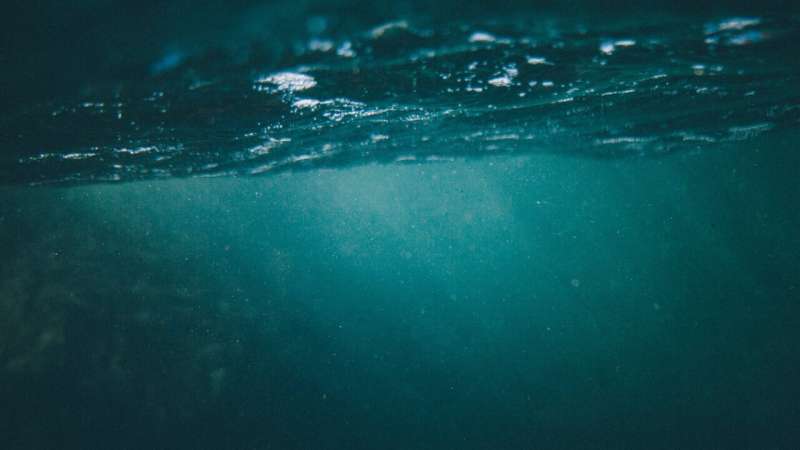Microplastics found in 100% of sampled Pennsylvania waterways, study shows

Studies released this week suggest microplastics—tiny polymer fragments—are ubiquitous in local waterways, even finding their way into the guts and digestive tracts of the prized blue crabs that populate the Delaware Bay.
PennEnvironment, a statewide environmental nonprofit, released a study Wednesday that found microplastics in 53 waterways sampled in Pennsylvania, including the Delaware and Schuylkill rivers. And all local waterways, including many creeks, showed the presence of at least three of the four types of plastics sampled: tiny fibers, fragments, films or microbeads the size of a sesame seed or much smaller nanoplastics.
The fibers come primarily from clothing and textiles, and get released from washing machines and then into wastewater treatment plants. Fragments and films come from the breakdown of larger, harder plastics, and from bags and flexible plastic packaging, and find their way into waterways through stormwater systems.
Microbeads, banned since 2018, were once found in many facial scrubs, cosmetics and even toothpaste, which then get flushed down sinks and toilets. The PennEnvironment study found less than 2% of sites contained microbeads, suggesting the ban has had an impact.
Studies showing a near ubiquitous presence of microplastics in waterways are not new, but the PennEnvironment study examined local waterways such as the Wissahickon, Ridley, Darby, Tookany and Neshaminy creeks, all of which had multiple types of the microplastics. Scientists found 87% of sites contained fragments, 94% had film, and 2% had microbeads.
To conduct its test, citizen-science volunteers, including U.S. Rep. Mary Gay Scanlon, a Democrat from Delaware County, and state Rep. Tim Briggs, a Democrat from Montgomery County, took 300 samples from January to June 2020 using protocols developed in a NOAA partnership. The study looked to determine the presence of microplastics in waterways, not to determine which waterways were most polluted by plastic.
The results were analyzed at the Academy of Natural Sciences of Drexel University. Staff from the Frontier Group, Penn State, Stroud Water Research Center and New Jersey Audubon were also among those involved in the project.
Scanlon said the study lends "hard data" to "move forward, both at the state and federal level, to make the case for why we need to change." Briggs said he found it surprising that microplastics were found in a sampling he took at Neshaminy Creek as it runs through Tyler State Park in water that "looks so clean and pure."
The tiny plastics can be toxic to some aquatic life. David Velinsky, head of the department of biodiversity, earth & environmental science at Drexel, said its possible chemicals from the plastics can make their way into the tissue of fish that are caught and eaten, but that impacts on humans remains unclear. However, he said microplastics are in the air and can also be inhaled.
Regardless, microplastics have been under increasing scrutiny in recent years as part of the overall problem with plastic pollution. Indeed, the PennEnvironment report comes on the heels of other local research.
Earlier this week, at a conference by the Partnership for the Delaware Estuary, a nonprofit group dedicated to protecting the estuary, scientists from the the University of Delaware presented research that found microplastics at six locations sampled within the estuary.
Separate research also from the university found microplastics in almost half of 31 crabs pulled from the Murderkill River and Blackbird Creek, both in Delaware, and part of the Delaware River watershed. Plastic was found in the the stomachs, gills and digestive tracts of the crabs.
Though it's unlikely a human eating a crab would consume plastic, the Atlantic Blue crab accounts for over 70% of Delaware's fishery value, said the study—which scientists say is the first confirmation of microplastic ingestion within the Delaware Estuary's blue crab population.
Also this week, Rutgers scientists published a paper in the journal Chemosphere showing stormwater provides a path for plastic pollution that plagues oceans, bays, rivers. The paper said sources of the fragments of larger pieces of plastic include municipal, industrial and stormwater outfalls. Specifically, the research looked at microplastics collected from Raritan Bay and the Atlantic Ocean off New Jersey, and determined they likely came from the Hudson River.
To reduce the presence of microplastics, PennEnvironment recommends bans on single-use plastic bags, bottle deposit requirements, passing of producer responsibility laws, oppose incentives for the fossil fuel industry to create new plastic, prohibit overstock clothing from, and the development of better stormwater systems.
©2021 The Philadelphia Inquirer
Distributed by Tribune Content Agency, LLC.





















